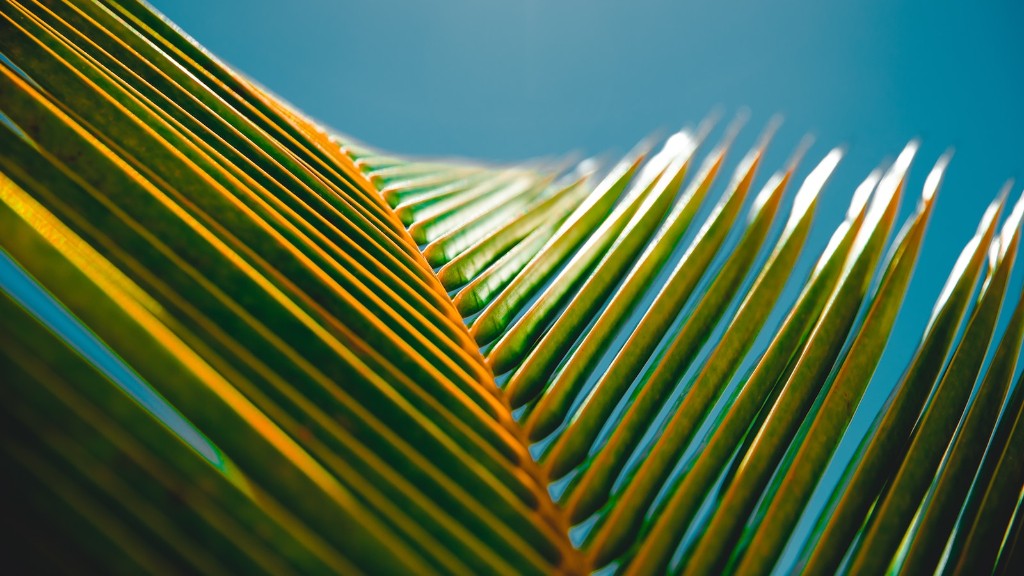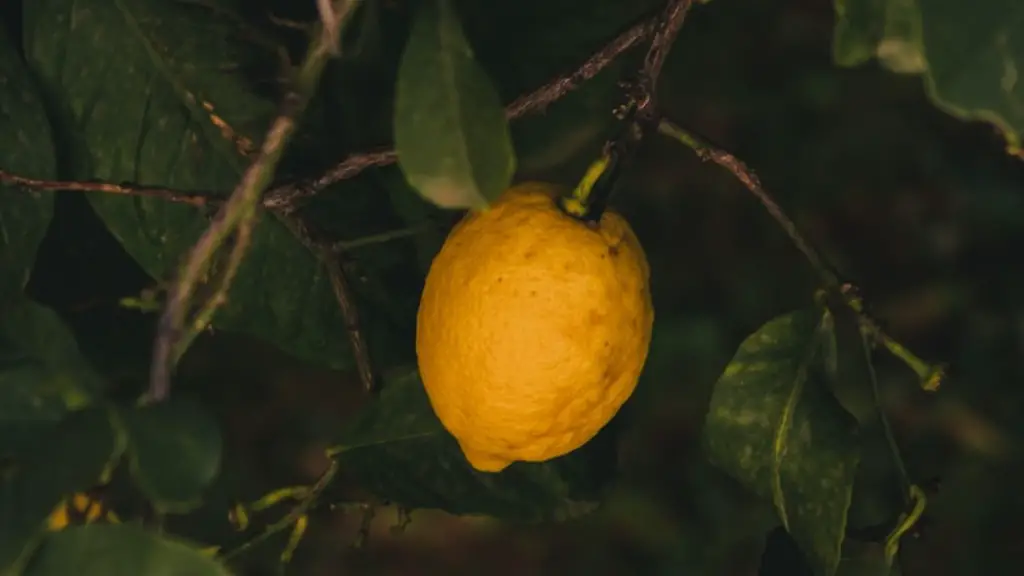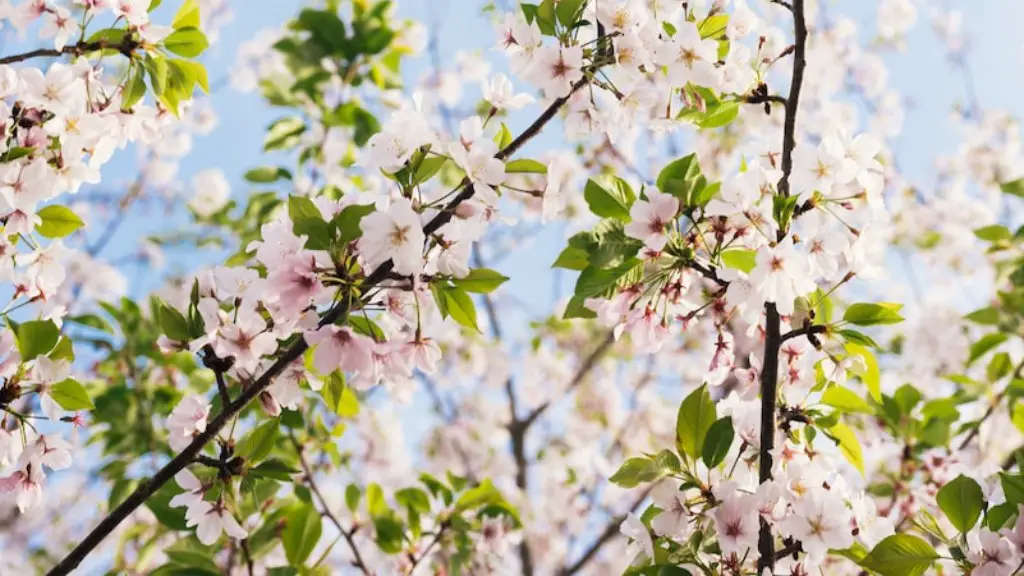There is no one definitive answer to how often you should water a palm tree. Depending on the climate you live in, the type of palm tree, and the size of the tree, the frequency of watering will vary. In general, however, most palm trees need to be watered about once a week.
The general rule of thumb is to water your palm tree about once a week. However, this may need to be adjusted based on the type of palm tree, the climate, the season, and how well the tree is draining.
How much water does a palm tree need per day?
For more established palms, watering should be done only 2-3 times per week, and this is only in the absence of rainfall. Most palms will only require watering if the top 2 inches or so of the soil has dried out.
If you see any of the following signs in your palm tree, it is likely that it is being overwatered: drooping leaves, black spots on leaves and stems, mold on the surface of the soil, yellowing leaves, browning leaf tips, browning stems, water sitting in the bottom of the pot tray, black roots. If you think your palm tree may be overwatered, try to reduce the amount of water you are giving it and see if the signs improve.
How often should you water an outdoor palm
When planting a palm in your garden, you will need to water it frequently for the first few weeks. After the first week, water every other day, and then 2-3 times per week. Palms prefer moist soil, so be sure to keep an eye on the moisture levels and adjust your watering schedule as needed.
To keep your palm looking its best, water it when the top inch of soil is dry. If you let the soil dry out completely, the leaf tips will begin to turn brown.
How long can palm trees go without water?
Most palm trees can go without water for at least two weeks. This can vary depending on the type of tree. Your palm tree can also last longer without water if you’ve used some advanced system like capillary matting or a bunch of wicks. For best results, you can keep your indoor palm in a terrarium.
If you notice that your tree’s leaves are starting to turn brown at the tips, it may just be a case of stress. However, if the leaves are fully brown, dead, or dying, it’s okay to trim them off. Just be careful not to trim too many leaves at once, as this can stress the tree out.
What does a dying palm tree look like?
If you see any of the aforementioned signs in your palm tree, it is likely dying or already dead. Unfortunately, in many cases the damage is irreversible and the palm tree cannot be saved. If you notice the signs early enough, however, there may be a chance to stop and reverse the damage to save the palm.
If your palm tree has brown center stalks, it is likely sick. To assess the health of your tree, look at the top center portion. If the stalks are brown and/or shriveling, your tree is not doing well.
How can you tell if a tree is water stressed
Trees signal their water deficit through a number of symptoms. The most common changes in appearance are lighter green to yellow-green foliage, leaf scorch around the margins, wilting leaves and dropping them prematurely. These symptoms are mostly due to the lack of water in the soil, which leads to the decreased uptake of water by the roots. Drought stress also causes the leaves to stop growing and produce less chlorophyll, which makes them appear lighter in color. In severe cases, the leaves may turn brown and drop off the tree.
The best time to water your palm is in the spring and summer when the weather is warm and wet. In the fall and winter, you should water less often to prevent the soil from drying out. If the weather is dry and hot, you should mist the foliage several times a day to keep it cool and help deter pests.
Do palm trees need a lot of sun?
There is a lot of variation among palm trees in terms of the amount of sunlight they need to grow well. Palms that naturally grow in the understory beneath taller trees do very well in lower light conditions in homes. However, palms with high light requirements need very sunny windows or supplemental lights when grown in pots indoors. Be sure to research the light requirements of any palm you are considering growing before making a purchase.
Carotenemia is a condition that causes the skin to turn a yellowish-orange color. It is typically caused by the prolonged intake of foods that are high in carotene, such as carrots and sweet potatoes. While carotenemia is generally harmless, it is important to seek medical attention if you experience any sudden or dramatic changes in your skin color.
Should I water my palm plant everyday
A new indoor Palm Tree should be watered every day in its first week. Next, move to every other day in its second week. Then settle for 3 times a week on the third. Once your indoor Palm Tree is completely settled, water it 2-3 times per week, or when the top 1-2 inches of the soil is completely dry.
If you notice that a significant number of leaves on your palm tree are browning and falling off, this could be a sign of a problem. Possible causes include disease, pests, or environmental stressors. If you’re not sure what’s causing the problem, it’s best to consult with a professional.
How often do palm trees need to be trimmed?
As a general rule, you should only trim or prune your palm trees when you see dead fronds that are weighing down your tree. Dead fronds will be brown, dry, and grim looking. Typically, this will be 1-2 times each year.
If you think your palm tree is dead, there are some things you can do to bring it back to life. Proper watering, pruning and fertilizing your dying palm tree is the best way to bring it back to life.
Final Words
You should water a palm tree about once a week, giving it enough water to soak the roots.
You should water a palm tree weekly, making sure to saturate the soil and not just give the tree a light watering.




